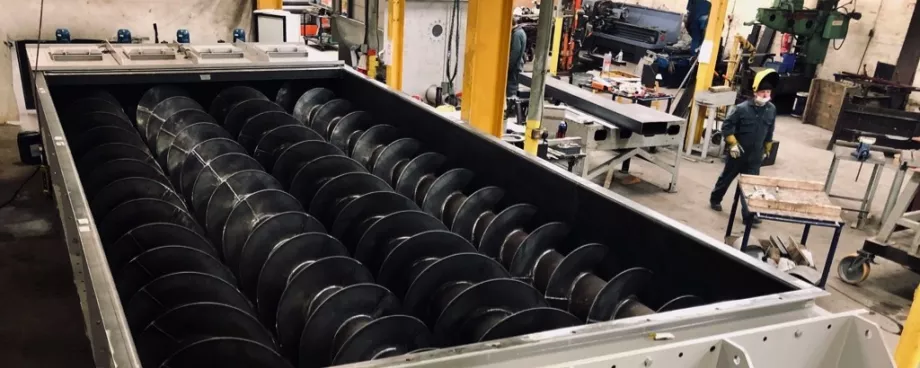It is well recognised that to get a dependable feed of bulk solids from a storage system it is essential to use the correct hopper geometry and outlet size. Less appreciated is the importance of the feeder design and interface between the feeder and hopper.
The Virtues of Multi-screw Feeders
Working with a suitably designed hopper, multi-screw feeders can provide a positive means of extraction and transfer of material. This helps to make sure all areas of the hopper flow, an essential requirement for achieving mass flow. Screw feeders also control the rate of feed, valuable for processes which require a consistent feed of material.
The benefits of multi-screw feeders are numerous and include compact construction, reduced headroom requirements, complete containment of the product as well as increasing the storage capacity and flow benefits of the vee-shaped hoppers served.
The design of a screw feeder, including the number of screws, depends on the needs of the material and process. Below are three Ajax Equipment case studies illustrating how multi-screw feeders can be utilised in both retrofit and new installations, and how their design is determined.
Two Screws - Chemical Powder Handling
In response to feed variations in excess of 30% from a feed system at an Egyptian fertiliser plant handling milled phosphate, Bradley Pulverizer called Ajax Equipment in to investigate.
The plant experienced flow problems shortly after starting up with material not flowing and sticking in a large pyramid silo as well as occasional flushing – where new material immediately leaves the hopper rather than exiting in the order it entered. To encourage flow aeration pads had been installed to introduce a low volume of air and cause the material to move. However, the addition of air resulted in uncontrolled flow from the hopper leading to downstream equipment to become flooded.
One the roots of the flow issues was the flow regime, ‘funnel flow’, generated in the hopper. Funnel flow arises in hoppers where the converging wall inclination is too shallow to stimulate the hopper’s contents to slip as the hopper empties. This results in a narrow path from the surface of the solid to the outlet for material to follow, creating an environment where fresh material is the first to leave the hopper.
To determine how best to improve material flow at the plant, Ajax used powder testing to examine the powder’s flow properties. Tests found that the combination of the material’s high shear strength and much shallower wall angles than required for mass flow were the reason ratholes formed and allowed new material flow straight through.
Wall friction testing provided Ajax with the hopper wall inclination needed for the powder to move with mass flow as well as showing that there would be significant slip benefits to using 2B finish stainless steel over the existing mild steel surface. The benefits of mass flow include increasing the material’s residence time in the hopper and enhancing deaeration.







